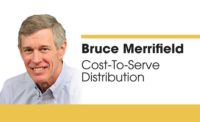Back in the day, Scott, my rep for a reputable HVAC manufacturer, told me a story. It went like this:
One of his customers (a local air conditioning competitor of mine) needed help pricing a large new construction job. Scott sat down with him and helped him draw out nine systems with air ducts and all for this home.
So, Scott not only drew out the systems for this contractor, he also went with him to talk to the homeowner. And as it turns out, Scott made the sale for my competitor. Yes, he sold the entire job, got a signature and a check for 20 percent down.
You can be sure I and several other contractors would have liked to have gotten that job. Many of us were in new construction and retrofit business at the time.
Now here is where the story takes a dark, grisly turn, much like a horror movie.
When it came time to buy the equipment to start the job do you think my competitor called Scott and told him to set up delivery? No, my competitor went shopping and bought much cheaper equipment from another supplier. Yes, he did. He showed no appreciation whatsoever to Scott for all his hard work and time.
Wholesale costs
Distributors buy from the manufacturer and warehouse products to be resold and delivered to the contractor, often delivered right to the buildings where they will be installed and operated. Distributors don’t get the benefit of always delivering a huge truckload to their customers. Distributors operate wholesale models. However, they have a high cost to deliver that product because volume is low on a per delivered item basis.
Have you ever asked your distributor to drop off a fan/coil unit or maybe just a motor or a circuit board? Imagine how their cost to deliver goods, sometimes one at a time, compares to the manufacturer who delivers a tractor-trailer load to one location. Would it be fair to say that a distributor needs a pretty good markup just to cover these higher costs? Do you ever think your distributor is making a killing off you? I chuckled when I wrote that. When you have just one unit or a few parts delivered to your shop, you are the one making a killing, and you are making a killing off of your distributor.
Now add in the part about your rep being on commission so he or she will go above and beyond to help you. By the way, don’t you do that with your customers as well? We can’t account for all costs by the penny. Many costs of doing business are doing what it takes to be the best provider for our customers.
You are not a wholesaler
If you need a bunch of one-call customers just to stay busy for a day, then your costs of delivering goods just skyrocketed over even that of your distributor. You have no opportunity — none — to lower your costs by delivering volume goods and services in bulk. So, what happened? Well, you are not a wholesaler.
The buck must stop when the truck stops and delivers products to your shop. Cut the apron strings. You are not a wholesaler. You are a contractor. You are in the retail business.
It’s no wonder that you sell heating and air systems for several times what you pay the supplier. You have a much higher cost of delivering a completed system and servicing the warranty. So, we all have different costs and each has a responsibility to charge appropriately.
There are very good reasons for the prices you charge, and you may not even be charging enough.
Wholesale model
How many of these “wholesale” methods are you using now?
- Volume – Get as many customers as you can.
- Products – Sell as much stuff as you can.
- Discounting – Give discounts to people who buy more products.
- Member type agreements – Give discounts to people who agree to buy from you exclusively like factory authorized dealers etc.
- Training – Teach your reps to sell and upsell every chance they get.
- Recruiting – Keep recruiting to fill spots where people who couldn’t cut it quit.
Retail Methods
In contrast, how many of these “retail” methods do you utilize?
- Profit must be maximized and protected on every job (every item in a store).
- If a loss leader is used it must pay for itself (add profit) in some other way.
- Entice customers to shop (do business) with you. (Think about a clean well-lighted store.)
- Sell the products and services that they want to buy. (Always research your target customers to see what products and services they spend money on.)
- Use “product placement” to enhance, showcase your best items (most profitable).
- Be nice to customers. Everybody wants and needs a friend.
- Allow them to feel like they feel when they shop at their favorite department store.
- Hire friendly but competent employees who put the customers’ needs ahead of all others while using a system that makes everything they do profitable for the company.
- Have several profitable price point options.
- Use higher-priced options, services and products to make lower-priced services and products look reasonable.
- Never offend the customer by trying to sell them something.
Most likely, you use both wholesale and retail methods in your contracting business. The important thing is to recognize what you need today. When volume drops for one type of business, you need to make it up with another type of business or failure (loss of profit) sets in. An example of this is that when our air conditioning business would slow, we would ramp up our indoor air quality business or crawlspace and attic renovations.
Partnering with your supplier to provide timely services for end users should be a win for everyone.




